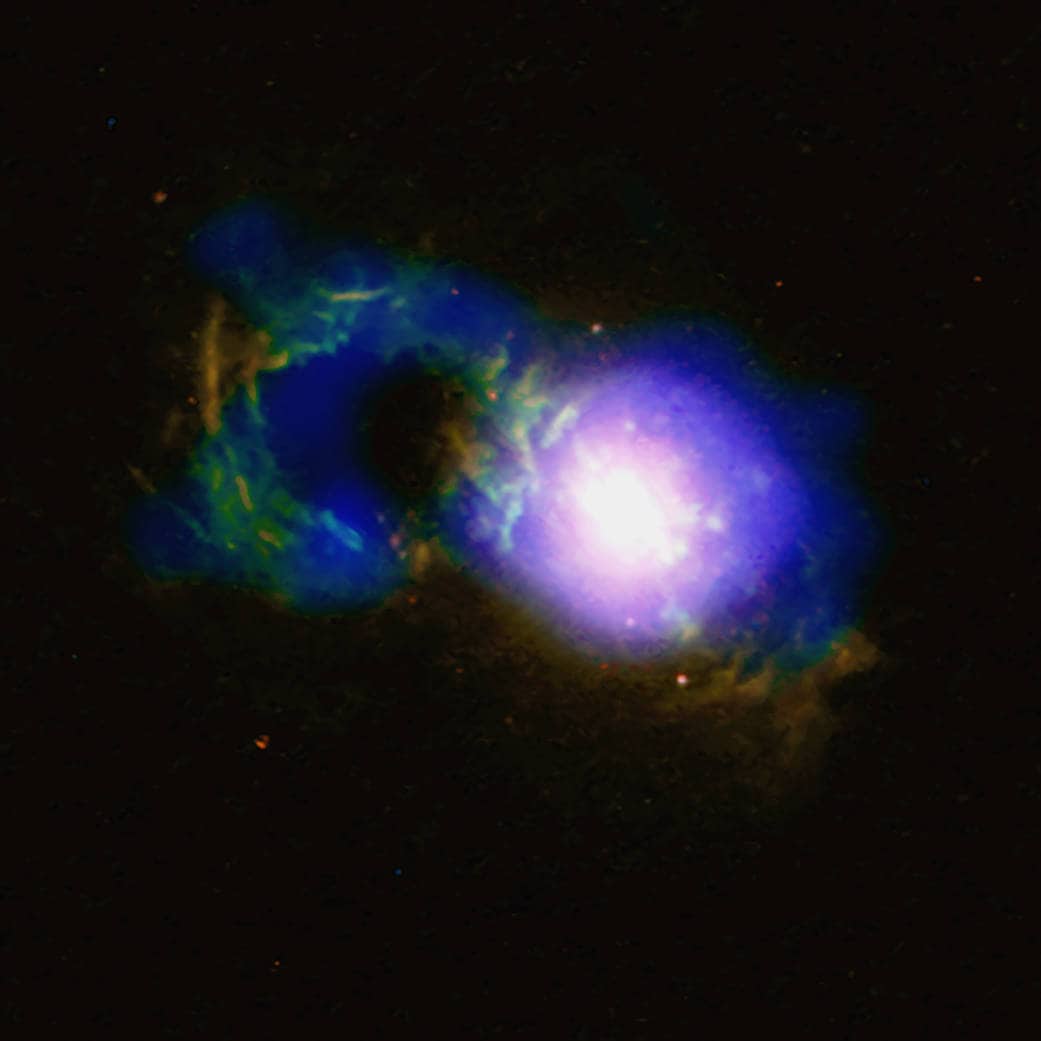The Cosmos with SDSS 1430+1339
The source of the cosmic squall is a supermassive black hole buried at the center of the galaxy, officially known as SDSS 1430+1339. As matter in the central regions of the galaxy is pulled toward the black hole, it is energized by the strong gravity and magnetic fields near the black hole. The infalling material produces more radiation than all the stars in the host galaxy. This kind of actively growing black hole is known as a quasar.
Located about 1.1 billion light years from Earth, the Teacup’s host galaxy was originally discovered in visible light images by citizen scientists in 2007 as part of the Galaxy Zoo project, using data from the Sloan Digital Sky Survey. Since then, professional astronomers using space-based telescopes have gathered clues about the history of this galaxy with an eye toward forecasting how stormy it will be in the future. This new composite image contains X-ray data from Chandra (blue) along with an optical view from NASA’s Hubble Space Telescope (red and green).
The “handle” of the Teacup is a ring of optical and X-ray light surrounding a giant bubble. This handle-shaped feature, which is located about 30,000 light-years from the supermassive black hole, was likely formed by one or more eruptions powered by the black hole. Radio emission — shown in a separate composite image with the optical data — also outlines this bubble, and a bubble about the same size on the other side of the black hole.
